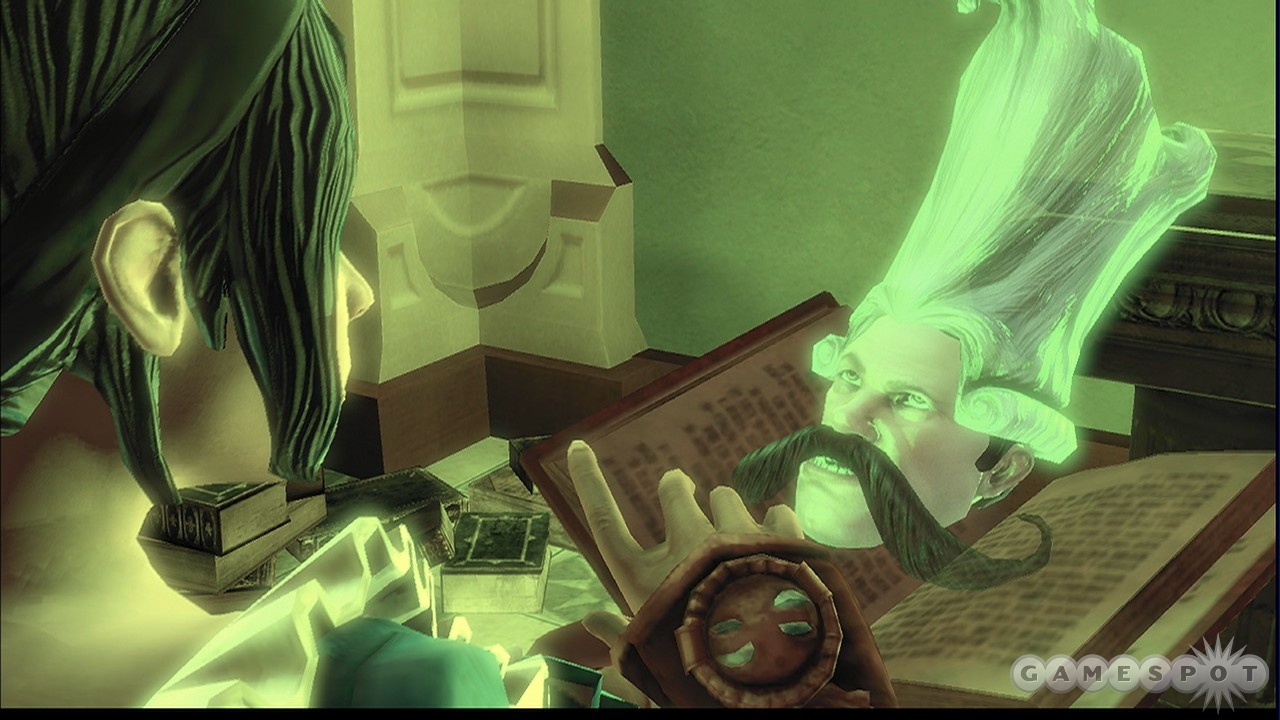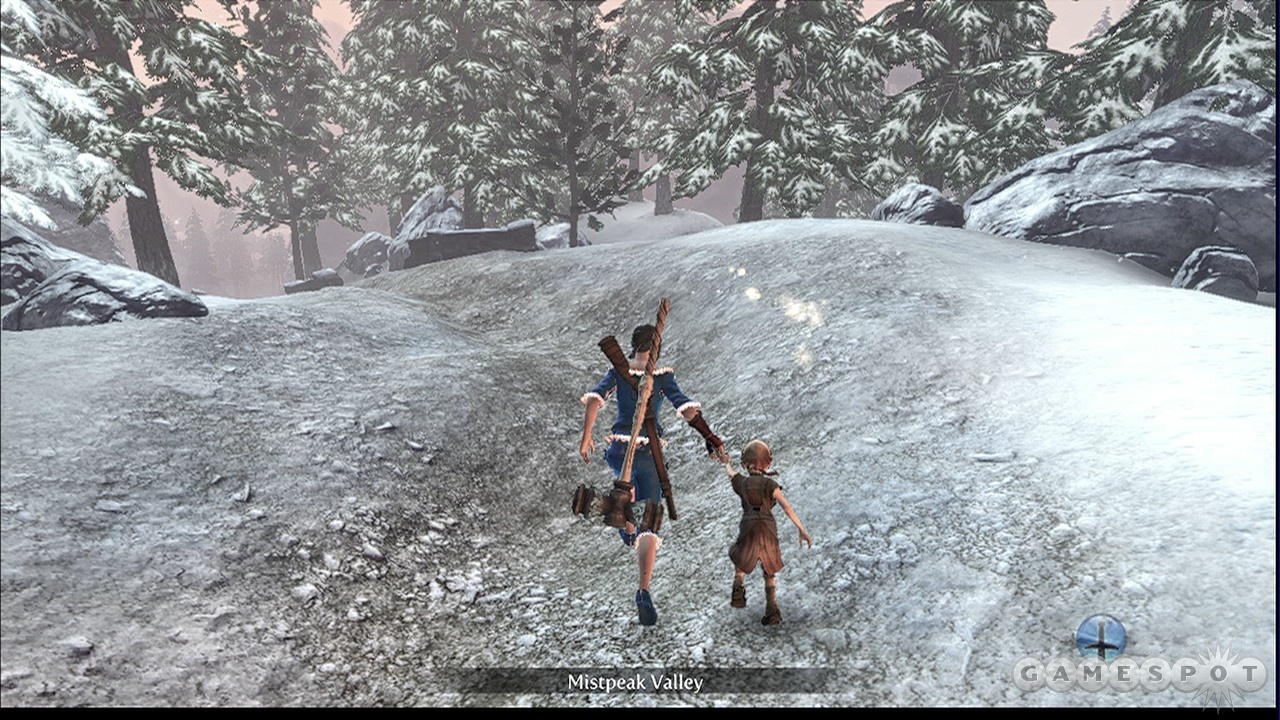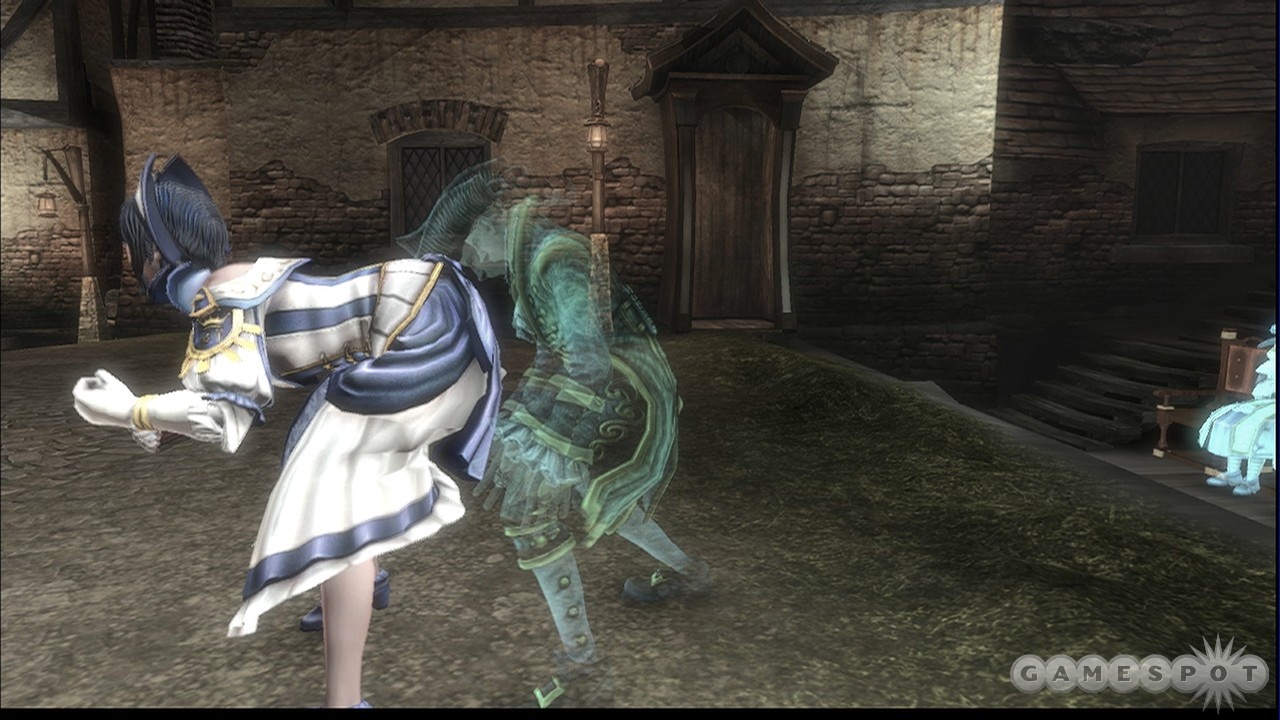Last October, Fable III was released for the Xbox 360. Comical characters and enchanting aesthetics overshadowed many of the game's problems, providing another magical trip through the world of Albion. For PC players eager to try their hand at being a hero, the wait is finally over. Fable III has arrived on the PC and brought with it the merriment and whimsy that make it such a pleasure to spend time in this mythical land. There are a few small changes from the console original, but this is essentially the same game that was released seven months ago. The combat has been rebalanced to provide more challenge and most of the graphical bugs have been ironed out, but don't expect any new content for your patience. In fact, previously released downloadable content, such as Traitor's Keep, isn't even included in the package; you need to shell out $7 to play it just like Xbox 360 owners. The lack of new content is disheartening, and problems such as weak moral choices and inconsequential gameplay diversions persist, but Fable III is still a delightful adventure that will make you laugh and smile while you're slicing up hollow men.
The hero who saved Albion in Fable II went on to become a beloved monarch, siring two children who would eventually look over the kingdom when their time came. Not all members of royalty can be blessed with a strong vision of how to lead their people into peace and prosperity, though. The oldest son of the former ruler has a case of the evils, and he is using his power as the new king to oppress the poor peasants who fall under his rule. As the younger sibling (you can choose to be a prince or princess), you flee from the castle under off-putting circumstances and must build up your own army to overthrow your power-hungry brother. There's a stronger emphasis on the story in Fable III than in previous games in the series, and there is a certain charm in meeting the various leaders throughout the city to gain allies. But the quests are structured more for a good hero than one with evil leanings; you are forced to do all sorts of nice things during your rise to power, which limits your chances to be an uncaring meanie.
The lack of choice in how the main quest plays out is disappointing, although it's possible to excuse this story conceit when you consider how it matches reality. To gain power, you must make concessions and convince people you're truly on their side; it's only after you take the throne for yourself that you can turn your back on the nice folks who supported you. That may make sense, but the lack of consequences for the vast majority of your actions makes it difficult to become invested in your choices. For instance, you can slay an entire town, murdering every adult you can find if you feel a bit bloodthirsty. But mere moments after committing such an atrocity, you can continue on with the main quests where people trust you and consider you a good person. It doesn't make any sense. Even choosing the bad option in side quests has few repercussions. In one early mission, you can choose to either kill a brood of chickens or let them live. If you spare their lives, you can bet on chicken races later. But even if you kill them all, the races are still available. The game goes so far out of its way to make sure you don't paint yourself into a corner that you rarely suffer any setback for your choices.
This lack of emotional connection seeps throughout the rest of the story. Character interaction has actually been dumbed down even from the fart-or-dance options that defined Fable II. As in the previous game, you have the choice to perform a nice or nasty greeting to any character you meet. If you're courteous, you can befriend and eventually marry that character. If you're obnoxious, though, you create many enemies. But when conversations with your date just have you whistling a song or playing patty-cake until she gives you a gift, it's hard to care one iota when she accidentally gets torn to shreds by a pack of balverines. Expressing your emotions is one of many places in which simplified mechanics limit your potential for fun. Previously, you could perform any learned gesture at any time. Now? You're limited to a couple options, and you have to wait for the choices to cycle through after every move. This aspect of the game has the same emotional impact as what you would find in Fable II (read: none), but it's hard to even care about your dog this time around. There is never a bonding moment and you can't even heal him after battle (he never gets hurt), so he's more of a furry metal detector than a lovable friend.
It's a shame that Fable III can't conjure any deep feelings for its funny-though-forgettable characters, but that's not to say you won't be emotionally invested at all. This is a gorgeous game. Every place you travel to has its own unique look and feel, and it's an undeniable joy to scour the lands for no other reason than to take in the beautiful sights. It is the breathtaking vistas and enchanting forests that pull you in; the smog-filled sky in Bowerstone or the sandy dunes of Aurora keep you engaged. Though your heart may not twinge for the characters you meet, the stirring score does a great job of making it flutter in your chest. Fable III is happy or somber, scary or uplifting, and it pulls off these emotional changes through careful artistic design and empowering music. Walking through Albion is to walk through the pages of a fairy tale. This meticulously constructed world is so enticing to look at and so pleasing to the ear that it makes up for the lack of depth in the other areas.
Unfortunately, the technical aspects aren't as refined as the artistic side of things. The most glaring problem is the pathfinding. Your dog, helpful treasure hunter that he is, is awful at pointing you in the right direction. He gets stuck on rocks and trees, and sometimes he just stands near you barking instead of running off to show you where to dig. This busted pathfinding stretches to humans as well. When you hold a companion's hand, you would expect him to dutifully walk alongside you. But your companions also get stuck on any obstacle in their path, and these quirks can quickly pull you out of the experience. In the Xbox 360 version, these technical issues also extend to the visuals, but those bugs have been mostly ironed out in the PC version. Pop-in and slowdown have been largely eradicated like so many hobbes, which lets the game showcase the blissful aesthetics without distracting you with a bevy of minor issues. Sadly, there are still frame rate drops during certain combat sequences, even on PCs that exceed the recommended settings. The game chugs along like a snail caught in a pile of salt, and the only way to set things rightl is to briefly return to your sanctuary. Despite the odd frame rate quirk, Fable III is a beautiful game that is a pleasure to explore.
Like the visuals, the combat system has also been improved from the Xbox 360 release. You have three core offensive abilities you can switch among at any time. Melee, magic, and ranged attacks require you to tap or hold the appropriate button and watch enemies die before you. Previously, you would gain separate experience orbs depending on which moves you used, but that upgrade system has been removed. This means that you have free choice in your actions--you no longer have to use ranged attacks just to build up that specific skill. In the Xbox 360 version, this meant you could rely on magic attacks for the entire game, which made fighting tedious. But enemies are stronger in the PC version, which forces you to switch among all of your attacks if you want to finish them off quickly. Smoothly switching from long-range attacks to keep your enemies at bay to sword strikes when they rush in makes you feel like the hero you're supposed to be, and though there is still little consequence for dying (you earn a few scars but respawn immediately), the added strategy helps to keep you invested in the hacking forays.
You don't upgrade your character directly in battle. Instead, you gain guild points by completing quests, killing enemies, and so forth, and you spend these on new powers. This is how you upgrade your various attacks, unlock new gestures, and purchase new types of magic, among other things. There are also aesthetic and practical changes made to your weapons as you play through your adventure. Your hero's starting weapons (a hammer, sword, pistol, and rifle) change shape depending on your actions. If you earn lots of gold, your sword may grow a gilded handle; or, if you like magic, glowing runes may be imposed on the side of your pistol. It's a neat feature that doesn't have much impact in combat, but it's a cool visual trick. More important are the attribute upgrades you can unlock for purchased weapons. If you slay 300 human enemies, then you may be able to gain money with each hit, for instance, and because these goals are clearly spelled out, it gives you something to strive for during combat. There is one nice touch in the combat that may not make it more fun to play, but it's certainly more fun to watch. Your hero randomly performs killer takedowns, and it's enjoyable to snap the necks of your enemies with your knees or pierce their hearts with your sword in a burst of brutality.
Fable III doesn't feature a traditional pause menu. Instead, when you pause, you're whisked away to your sanctuary. This is a safe house that hides a few separate rooms in which you can take care of your royal duties. Duck into your wardrobe to don a chicken suit or maybe go around in just your underwear; change your weapons in your armory; go into a treasure vault that gives you a chance to ogle your wealth and marvel at your trophies; or visit a fancy co-op room that lets you check your stats and join another player's game. And in the center of these rooms is a map that lets you look down at the whole kingdom or fast travel anywhere in a snap. Because it only takes a second to warp to the sanctuary at any time (even midbattle), load times aren't a problem, and there is an undeniable pleasure in grabbing a rifle off the wall or seeing your clothes on a mannequin before you get dressed. The sanctuary is a quiet place to take a breather and a novel way to deal with item management.
The sights and sounds are certainly the most obvious draw in Fable III, but this is also a consistently funny and often hilarious game. The sheer wealth of punch line victims is awesome. Once again, chickens are thrust to the forefront, but theories involving evil poultry are just the beginning of the ridiculous instances. There's one mercenary's reaction to being farted on (an unhealthy amount of puking), a clever wink at the anticlimatic final boss in Fable II, and even a jab at the expense of child labor. Few topics are off limits, but all the humor is good natured, ensuring that it delights rather than offends. There are also 50 mouthy gnomes dotting the land to find and silence. There's nothing quite like searching for a lost child and then hearing insults raining down from above until you finally find the foul-mouthed gnome and shoot him with your trusty gun. Fable III keeps up its funny facade the whole way through, and it's a huge part of why it remains so entertaining despite its problems.
Unfortunately, the bulk of the game comprises small issues. You can purchase businesses and properties in Fable III, and you receive a stipend every five minutes. In the previous game, you earned money even when the game was turned off, which was a cheap way to build a fortune. Now, you have to actually be playing, so your bank grows more slowly, and you have to maintain your properties. It may not sound like much, but when you own dozens of houses, it can be a huge pain to go to each one and repair it so you can continue to reap your financial benefits. If you had the option to just "repair all," it would have made things less tedious. Thankfully, you can handle all of your property management using the map in your sanctuary, which means you can buy that pub you've been eyeing in the middle of battle or even evict some peasants because you feel like being a jerk.
With all the side quests in Fable III, it can take more than 20 hours to reach the end. And you can even play through the entire adventure cooperatively if you're pining for some companionship. You can take your hero into another player's world or, if you're the trusting type, invite another player to play in yours. The core gameplay is unchanged so don't expect any cool additions just because you have a friend in tow, but it can still be a lot of fun. Combining forces lets you dispose of those pesky enemies even quicker, giving you a chance to focus on the good elements while brushing the weaker aspects to the curb. If you're really committed, you can start a family (and even have a baby!) or enter into a property contract and share your collective wealth. If you team up with the wrong person, though, you could be bankrupt in a hurry or be stuck with a hungry brood while your friend is off adventuring, but it's all in good fun. This is a game about choices after all, so just make sure you don't unwittingly team up with someone on the evil side of the morality fence.
Fable III has issues--emotionally distant characters, and weak moral choices among them--but its biggest problem is Fable II. The latest adventure in Albion plays so similar to its predecessor that it struggles to establish an identity of its own. The small tweaks don't dig very deeply and the cosmetic changes are welcome but insubstantial. So, this is ultimately a really enjoyable game that will deliver a serious case of deja vu for anyone who spent time playing the last game. That's not a deal breaker, but it makes the good elements less exciting and the bad elements more noticeable. The outstanding artistic design and great sense of humor make it worth playing, but the other aspects have been streamlined to such a high degree that their simple pleasures have been lessened. While you shouldn't expect everything to run smoothly, it's a joy to be whisked away to Fable III's magical world.



